The Pill is not your only option. Other ‘worry free’ options might work better.
Most women are comfortable and familiar with using the Pill, though this is not always the most reliable method. Other methods known as LARCs or Long Acting Reversible Contraception can protect you for weeks or months at a time without you having to remember to do anything.
You and your health provider can talk about the best contraception for you.
The following is a brief description of all of your contraception choices.
The male condom
The male condom is a fine rubber or synthetic sheath that is worn on a stiff (erect) penis. It collects the sperm and stops them entering your vagina and uterus. You can buy condoms from a chemist or supermarket. Condoms reduce the risk of both pregnancy and sexually transmitted infection. Condoms are 98 per cent effective if they are used correctly.
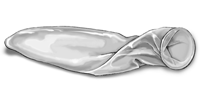
Diaphragms
A diaphragm is a soft silicone cap worn inside the vagina to cover the entrance to the uterus (the cervix). It stops the sperm from getting into the uterus. A diaphragm can be used at any time, even during your period, and can be washed and used over and over again. A diaphragm has to be put in before having sex (up to 24 hours before) and removed after sex. When used correctly diaphragms are 94 per cent effective at preventing pregnancy.
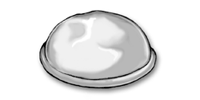
The Pill
Even though we use the expression 'the Pill', there are actually two main types of oral contraceptive pills.
The combined pill
This pill has two hormones, which stop the ovaries releasing an egg each month. You still bleed each month but not as much as usual. The combined pill can also bring relief for acne and premenstrual syndrome. Some women will have side-effects such as bloating, nausea, and minor weight gain. The combined pill is 99.7 per cent effective with perfect use.
The progestogen-only pill
(mini pill or POP)
This pill has only one hormone and works by changing the mucus at the entrance to the womb (uterus) so that sperm cannot pass through to fertilise the egg.
The progestogen-only pill is different to the combined pill because it doesn’t stop ovulation. The POP is 99.7 per cent effective with perfect use.
If mistakes happen, such as missed pills, around one in ten women may get pregnant.
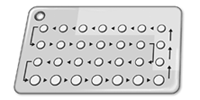
The vaginal ring
The vaginal ring contains the same two hormones that are in some types of the Pill. It works in the same way as the Pill to prevent an egg being released each month. The ring is placed high in the vagina and left in place for three weeks. It is removed for one week to allow you to have a regular monthly bleed. The vaginal ring is 99.7 per cent effective with perfect use. Like the Pill, 1 in 10 women (10 per cent) using a vaginal ring may get pregnant.
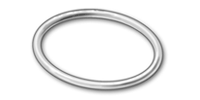
Emergency pill
(sometimes called the ‘morning after pill’)
If you had sex without contraception, or you were using a condom that broke, you can take an emergency pill, which will prevent a pregnancy from happening.
Emergency pills are available from the chemist with no prescription. They must be started within three days (72 hours) after unprotected sex and they work best if taken as soon as possible after sex.

The contraceptive injection
DMPA (also called Depo Provera or Depo Ralovera) is an injection of a long-acting synthetic hormone. Women have the injection every 12 weeks for contraception. It can be used when breastfeeding. Some women will have side-effects, such as mood changes, tummy discomfort and headaches, which can last for up to 12 weeks. Depo Provera is 99.8 per cent effective with perfect use.
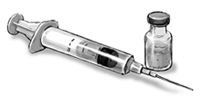
Contraceptive skin implant
This is a small plastic rod, which is inserted underneath the skin on the inside of the upper arm. It slowly releases the synthetic hormone progestogen, which stops the ovaries releasing an egg each month. Most women will have a different bleeding pattern and some stop bleeding altogether. Some women will notice skin changes, mood changes or minor weight gain. It will last for three years and is a very effective method for preventing pregnancy (99.95 per cent effective).

Intra Uterine Device (IUD)
This is a small contraceptive device that is placed in your uterus. There are two kinds of IUD:
- copper IUD – lasts five to ten years and is 99.4 per cent effective
- progestogen IUD – lasts for five years and is 99.8 per cent effective.
The IUD affects sperm movement and survival in the uterus (womb) so that they cannot reach the egg to fertilise it. The IUD also changes the lining of the womb (endometrium) so that it is not suitable for pregnancy. This prevents a fertilised egg from developing.
It is very effective long-term contraception.

Sterilisation
Both men and women can have an operation to make them sterile. The woman's operation involves blocking the fallopian tubes. It is done through the abdomen and is called a tubal occlusion and tubal ligation. The male operation is called a vasectomy. The operations are more than 99 per cent effective and are permanent. This method is for people who have already had all the children they want.
There are also now tiny inserts that can be placed inside a woman's tubes by means of a special instrument. This procedure is done through the vagina and can be done while the woman is awake.
Natural methods of contraception
The rhythm or Billings methods, fertility awareness, mucus, ovulation and temperature methods all provide ways for your to monitor where you are at in your cycle and when you are fertile. These methods are most effective when you have regular periods. If they are done perfectly these methods are between 95 to 99.6 per cent effective. However, 5 in 20 women (25 per cent) may get pregnant using these methods.
Withdrawal
This is when the man takes his penis out of the vagina before he ejaculates and sperm is released from the penis. This doesn't work if he forgets to withdraw his penis or is not quick enough. Also there may be some sperm in the pre-ejaculate (fluid that comes out of his penis before he ejaculates). If he ejaculates at the entrance to the vagina some sperm may still swim inside and a woman could still get pregnant with this method. Perfect use of the withdrawal method is 96 per cent effective. Approximately 2 in 10 women get pregnant using this method of contraception.
Where to get more information
- Your local doctor (GP)
- Your local pharmacist
- Women’s Welcome Centre (Victoria only)
Tel: (03) 8345 3037 or 1800 442 007 (rural callers)
Fact sheets about contraception are also available in Arabic, Chinese, Hindi, Spanish, Urdu and Vietnamese – see Related Health Topics below
Related information
- Sexual Health Victoria for more information on contraception
- Provide feedback about the information on this page
Related Health Topics
Disclaimer
The Women’s does not accept any liability to any person for the information or advice (or use of such information or advice) which is provided on the Website or incorporated into it by reference. The Women’s provide this information on the understanding that all persons accessing it take responsibility for assessing its relevance and accuracy. Women are encouraged to discuss their health needs with a health practitioner. If you have concerns about your health, you should seek advice from your health care provider or if you require urgent care you should go to the nearest Emergency Dept.